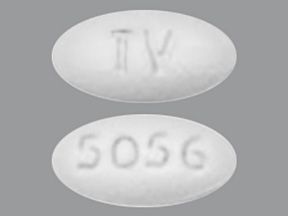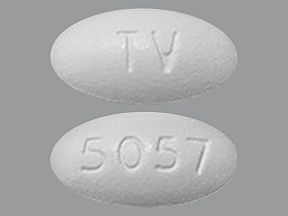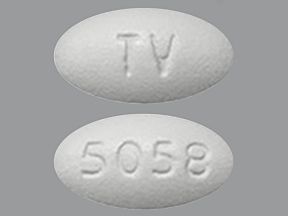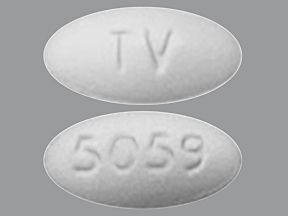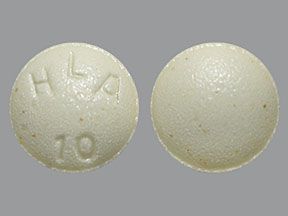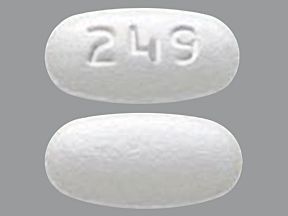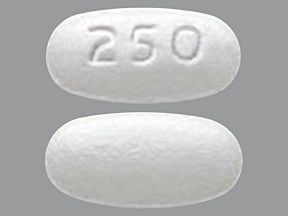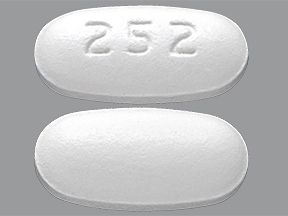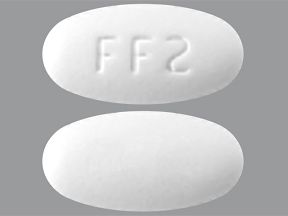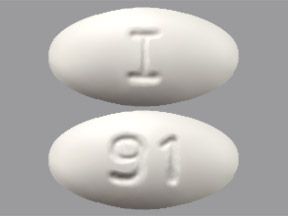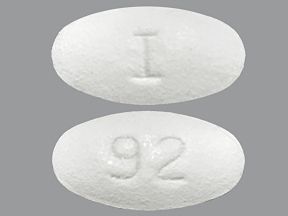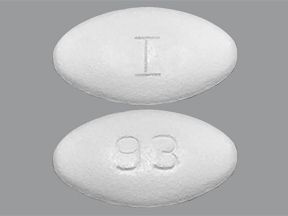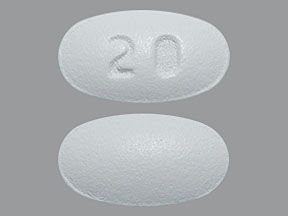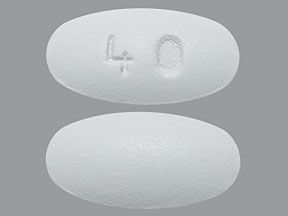- Atorvastatin oral tablet is available as both a generic drug and a brand-name drug. Brand name: Lipitor.
- Atorvastatin only comes in the form of a tablet you take by mouth.
- Atorvastatin oral tablet is used to improve cholesterol levels and decrease your risk for heart attack and stroke. It’s used together with diet, weight loss, and exercise.
- Muscle problems warning: Your risk for myopathy (muscle pain, tenderness, or weakness) and rhabdomyolysis (muscle breakdown) is increased while taking atorvastatin. The risk is greater if you’re a senior, have thyroid problems, or have kidney disease. Tell your doctor right away if you start to have unexplained muscle soreness, pain, or weakness.
- Liver problems warning: Lab tests for your liver may be abnormally high while you’re taking atorvastatin and you may have liver problems. Your doctor will monitor this while you’re taking this drug.
- Increased blood sugars warning: Atorvastatin may increase your blood sugar levels. You and your doctor should monitor your blood sugar levels carefully while you’re taking this drug.
Atorvastatin oral tablet is a prescription drug. It’s available as a brand-name drug called Lipitor. It’s also available in a generic form. Generic drugs usually cost less than the brand-name version. In some cases, they may not be available in all strengths or forms as the brand-name drug.
Why it’s used
Atorvastatin is used to improve cholesterol levels in people with different types of cholesterol problems. It’s also used to decrease your risk for heart attack and stroke. It’s used together with diet, weight loss, and exercise.
Atorvastatin helps to prevent cholesterol from building up in your arteries. Clogged arteries can block blood flow to your heart and brain.
Atorvastatin may be used as part of a combination therapy. This means you may need to take it with other medications. These may include bile acid resins and other cholesterol-lowering medications.
How it works
Atorvastatin belongs to a class of drugs called HMG-CoA reductase inhibitors, or statins. A class of drugs is a group of medications that work in a similar way. These drugs are often used to treat similar conditions.
This drug works by lowering your low-density lipoprotein (LDL) or “bad” cholesterol and raising your high-density lipoprotein (HDL) or “good” cholesterol. Atorvastatin improves your body’s ability to get rid of LDL cholesterol through your liver.
Atorvastatin oral tablet doesn’t cause drowsiness, but it can cause other side effects.
More common side effects
Some of the more common side effects that can occur with the use of atorvastatin oral tablets include:
- cold symptoms such as runny nose, sneezing, and coughing
- diarrhea
- gas
- heartburn
- joint pain
- forgetfulness
- confusion
- urinary tract infection (UTI)
If these effects are mild, they may go away within a few days or a couple of weeks. If they’re more severe or don’t go away, talk to your doctor or pharmacist.
Serious side effects
Call your doctor right away if you have serious side effects. Call 911 if your symptoms feel life-threatening or if you think you’re having a medical emergency. Serious side effects and their symptoms can include the following:
- Muscle problems. Symptoms can include:
- unexplained muscle weakness, tenderness, or pain
- tiredness
- Liver problems. Symptoms can include:
- tiredness or weakness
- loss of appetite
- upper stomach pain
- dark urine
- yellowing of your skin or the whites of your eyes
- Allergic reaction.
Disclaimer: Our goal is to provide you with the most relevant and current information. However, because drugs affect each person differently, we cannot guarantee that this information includes all possible side effects. This information is not a substitute for medical advice. Always discuss possible side effects with a healthcare provider who knows your medical history.
Atorvastatin oral tablet can interact with other medications, vitamins, or herbs you may be taking. An interaction is when a substance changes the way a drug works. This can be harmful or prevent the drug from working well.
To help avoid interactions, your doctor should manage all of your medications carefully. Be sure to tell your doctor about all medications, vitamins, or herbs you’re taking. To find out how this drug might interact with something else you’re taking, talk to your doctor or pharmacist.
Examples of drugs that can cause interactions with atorvastatin are listed below.
Antibiotics
Taking atorvastatin with certain antibiotics increases your risk for muscle problems. Examples of these drugs include:
- clarithromycin
- erythromycin
Fungal drugs
Taking atorvastatin with certain drugs used to treat fungal infections may cause atorvastatin to build up in your body. This raises your risk for muscle breakdown. If you need to take these drugs together, your doctor may decrease your dosage of atorvastatin. Examples of these drugs include:
- itraconazole
- ketoconazole
Cholesterol-lowering drugs
Taking atorvastatin with other cholesterol-lowering drugs raises your risk for muscle problems. Your doctor may change your dosage of these medications or have you avoid taking them together. Examples of these drugs include:
- gemfibrozil
- medications that contain fibrate
- niacin
Rifampin
Taking rifampin with atorvastatin may lower the amount of atorvastatin in your body. This means that the atorvastatin may not work as well.
HIV drugs
Taking atorvastatin with certain drugs used to treat HIV may cause atorvastatin to build up in your body. This raises your risk for muscle breakdown. If you need to take these drugs together, your doctor may decrease your dosage of atorvastatin. Examples of these drugs include protease inhibitors such as:
- darunavir
- fosamprenavir
- lopinavir
- ritonavir
- saquinavir
- tipranavir
Digoxin
Taking digoxin with atorvastatin can increase the amount of digoxin in your blood to dangerous levels. If you need to take these drugs together, your doctor will monitor these levels and adjust your medication doses if needed.
Oral birth control pills
Taking atorvastatin with oral birth control pills may increase the levels of oral contraceptive hormones in your blood.
Colchicine
Taking colchicine with atorvastatin raises your risk for muscle breakdown.
Cyclosporine
Taking cyclosporine with atorvastatin raises your risk for muscle breakdown. Your doctor should avoid this combination.
Disclaimer: Our goal is to provide you with the most relevant and current information. However, because drugs interact differently in each person, we cannot guarantee that this information includes all possible interactions. This information is not a substitute for medical advice. Always speak with your healthcare provider about possible interactions with all prescription drugs, vitamins, herbs and supplements, and over-the-counter drugs that you are taking.
This drug comes with several warnings.
Allergy warning
Atorvastatin can cause a severe allergic reaction. Symptoms can include:
- swelling of your face, lips, tongue, or throat
- trouble breathing
- trouble swallowing
Call 911 or go to the nearest emergency room if you develop these symptoms. Don’t take this drug again if you’ve ever had an allergic reaction to it. Taking it again could be fatal (cause death).
Food interactions warning
Avoid drinking large amounts of grapefruit juice while taking atorvastatin. Drinking grapefruit juice can lead to a buildup of atorvastatin in your blood, which raises your risk for muscle breakdown. Ask your doctor how much grapefruit juice is safe for you.
Alcohol interaction warning
The use of drinks that contain alcohol raises your risk for liver disease from atorvastatin. Talk to your doctor if you drink more than two alcoholic drinks per day.
Warnings for people with certain health conditions
For people with kidney problems: Having kidney problems raises your risk for muscle breakdown while taking atorvastatin. Your doctor may monitor you more closely for muscle problems.
For people with liver disease: You shouldn’t take this drug if you have liver disease, as this medication can increase your liver test results. This means that you may have liver damage. If you have liver problems, talk with your doctor to make sure this drug is safe for you.
For people with diabetes: Atorvastatin may increase your blood sugar levels. Your doctor may adjust your diabetes medications if this happens, and you may need to monitor your blood sugar levels more often than usual while you’re taking this drug.
Warnings for other groups
For pregnant women: Atorvastatin should never be used during pregnancy. Safety in pregnant women is unknown and there’s no apparent benefit of this drug during pregnancy.
Call your doctor right away if you become pregnant while taking this drug.
For women who are breastfeeding: Atorvastatin should not be used during breastfeeding. If you breastfeed your child, talk to your doctor about what medication could be right for you.
For seniors: People over the age of 65 years have a higher risk for muscle breakdown (rhabdomyolysis) while taking atorvastatin.
For children: Atorvastatin hasn’t been studied and shouldn’t be used in children younger than 10 years. This drug has been shown to be safe and effective in children 10–17 years of age.
This dosage information is for atorvastatin oral tablets. All possible dosages and drug forms may not be included here. Your dosage, drug form, and how often you take the drug will depend on:
- your age
- the condition being treated
- how severe your condition is
- other medical conditions you have
- how you react to the first dose
Forms and strengths
Generic: Atorvastatin
- Form: oral tablet
- Strengths: 10 mg, 20 mg, 40 mg, and 80 mg
Brand: Lipitor
- Form: oral tablet
- Strengths: 10 mg, 20 mg, 40 mg, and 80 mg
Dosage for prevention of heart disease
Adult dosage (ages 18–64 years)
- Typical starting dosage: 10–20 mg taken once per day.
- Typical maintenance dosage: 10–80 mg taken once per day.
Child dosage (ages 0–17 years)
Atorvastatin hasn’t been approved for use in children younger than 18 years for the prevention of heart disease.
Senior dosage (ages 65 years and older)
The kidneys of older adults may not work as well as they used to. This can cause your body to process drugs more slowly. As a result, more of a drug stays in your body for a longer time. This increases your risk for side effects.
Your doctor may start you on a lowered dosage or a different medication schedule. This can help keep levels of this drug from building up too much in your body.
Dosage for dyslipidemia (cholesterol problems)
Adult dosage (ages 18–64 years)
- Typical starting dosage: 10–20 mg taken once per day.
- Typical maintenance dosage: 10–80 mg taken once per day.
- Note: When treating homozygous familial hypercholesterolemia, the dosage is 10–80 mg taken once per day.
Child dosage (ages 10–17 years)
In children, atorvastatin is only used to treat heterozygous familial hypercholesterolemia.
- Typical starting dosage: 10 mg once per day.
- Maximum dosage: 20 mg once per day.
Child dosage (ages 0–9 years)
Atorvastatin hasn’t been studied in children younger than 10 years of age for this purpose. It shouldn’t be used in this age range for this purpose.
Senior dosage (ages 65 years and older)
The kidneys of older adults may not work as well as they used to. This can cause your body to process drugs more slowly. As a result, more of a drug stays in your body for a longer time. This increases your risk for side effects.
Your doctor may start you on a lowered dosage or a different medication schedule. This can help keep levels of this drug from building up too much in your body.
Disclaimer: Our goal is to provide you with the most relevant and current information. However, because drugs affect each person differently, we cannot guarantee that this list includes all possible dosages. This information is not a substitute for medical advice. Always to speak with your doctor or pharmacist about dosages that are right for you.
Atorvastatin oral tablet is used for long-term treatment. It comes with risks if you don’t take it as prescribed.
If you stop taking the drug or don’t take it at all: While eating a healthy diet can sometimes improve your cholesterol levels, atorvastatin can help them even more. If you don’t take atorvastatin, your cholesterol levels may not be controlled. This may raise your risk for heart attack or stroke.
If you miss doses or don’t take the drug on schedule: Your medication may not work as well or may stop working completely. For this drug to work well, a certain amount needs to be in your body at all times.
If you take too much: You could have dangerous levels of the drug in your body. You may have the following symptoms:
- diarrhea
- gas
- heartburn
- joint pain
- forgetfulness
- confusion
- unexplained muscle weakness, tenderness, or pain
- loss of appetite
- upper stomach pain
- dark-colored urine
- yellowing of your skin or the whites of your eyes
If you think you’ve taken too much of this drug, call your doctor or seek guidance from the American Association of Poison Control Centers at 1-800-222-1222 or through their online tool. But if your symptoms are severe, call 911 or go to the nearest emergency room right away.
What to do if you miss a dose: Take your dose as soon as you remember. But if you remember just a few hours before your next scheduled dose, take only one dose. Never try to catch up by taking two doses at once. This could result in dangerous side effects.
How to tell if the drug is working: You won’t be able to feel atorvastatin working. Your doctor will measure your cholesterol levels to see how well atorvastatin is working for you. Your doctor may adjust your dosage depending on your cholesterol levels.
Keep these considerations in mind if your doctor prescribes atorvastatin oral tablet for you.
General
- Don’t cut or crush the tablet.
Storage
- Store atorvastatin at room temperature between 68°F (20°C) and 77°F (25°C). Keep it away from high temperatures.
- Don’t store this medication in moist or damp areas, such as bathrooms.
Refills
A prescription for this medication is refillable. You should not need a new prescription for this medication to be refilled. Your doctor will write the number of refills authorized on your prescription.
Travel
When traveling with your medication:
- Always carry your medication with you. When flying, never put it into a checked bag. Keep it in your carry-on bag.
- Don’t worry about airport X-ray machines. They can’t hurt your medication.
- You may need to show airport staff the pharmacy label for your medication. Always carry the original prescription-labeled container with you.
- Don’t put this medication in your car’s glove compartment or leave it in the car. Be sure to avoid doing this when the weather is very hot or very cold.
Clinical monitoring
While you’re being treated with atorvastatin, your doctor will check your cholesterol levels and liver function. This will be done through blood tests.
Your diet
Your doctor may have you follow a low-fat, low-cholesterol diet while you take this drug.
There are other drugs available to treat your condition. Some may be better suited for you than others. Talk to your doctor about other drug options that may work for you.
Disclaimer: Medical News Today has made every effort to make certain that all information is factually correct, comprehensive, and up-to-date. However, this article should not be used as a substitute for the knowledge and expertise of a licensed healthcare professional. You should always consult your doctor or other healthcare professional before taking any medication. The drug information contained herein is subject to change and is not intended to cover all possible uses, directions, precautions, warnings, drug interactions, allergic reactions, or adverse effects. The absence of warnings or other information for a given drug does not indicate that the drug or drug combination is safe, effective, or appropriate for all patients or all specific uses.

